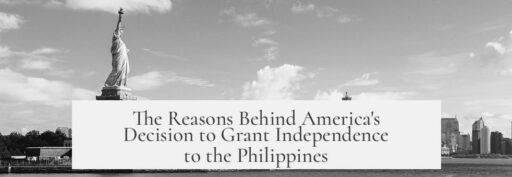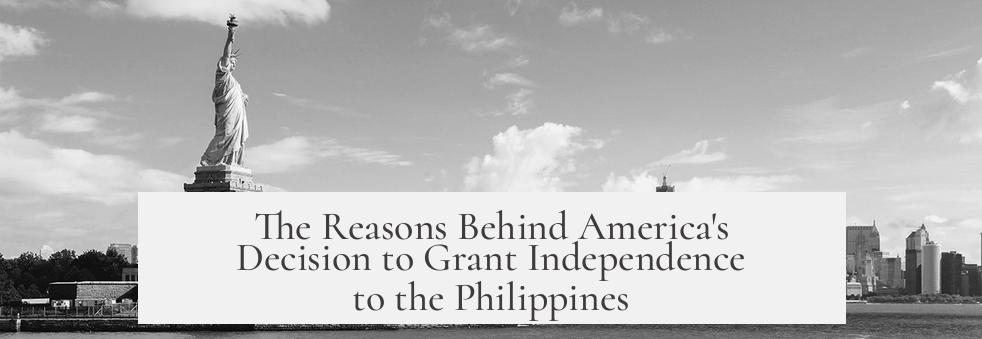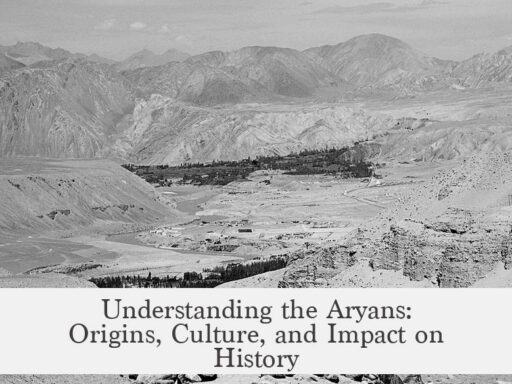The United States let the Philippines go due to changing political attitudes, practical challenges in governing the islands, and Filipino demands for independence. Initially, American imperialism aimed to maintain the Philippines as a naval base in East Asia after acquiring it from Spain. However, the high cost of warfare and governance sparked strong anti-imperialist sentiment at home.
The Philippines, home to about 10 million people then, presented unique obstacles. Spain had lost control due to local revolutionary forces led by Aguinaldo who refused to accept U.S. sovereignty. Moreover, southern Muslim groups resisted American rule, resulting in prolonged conflict. This made the colony difficult to manage.
Maintaining the Philippines as a dependency like Puerto Rico was not feasible. To integrate the islands fully, the U.S. would need to grant statehood, which many American politicians opposed. Statehood risked shifting the balance of power in Congress by adding numerous representatives and senators. This domestic political resistance grew as the Filipino-American War revealed the costs and limits of imperialism.
Simultaneously, Filipino leaders and the population increasingly advocated for independence rather than statehood. U.S. policymakers responded by passing the 1916 Jones Law, promising eventual Philippine independence without a fixed date. Later, the 1934 Tydings-McDuffie Act set a timetable for full sovereignty, reflecting both U.S. strategic retreat and respect for Filipino self-determination.
- The American public and politicians’ views shifted against imperialism after years of conflict and cost.
- The Philippines were difficult to govern due to size, population, and local resistance.
- Granting statehood was politically unpopular in the U.S. because of congressional implications.
- Filipino leaders supported independence, not statehood, influencing U.S. policy changes.
- Legislation such as the Jones Law and Tydings-McDuffie Act formalized plans for independence.
Why Did the US Let the Philippines Go? The Story Behind America’s Colonial Exit
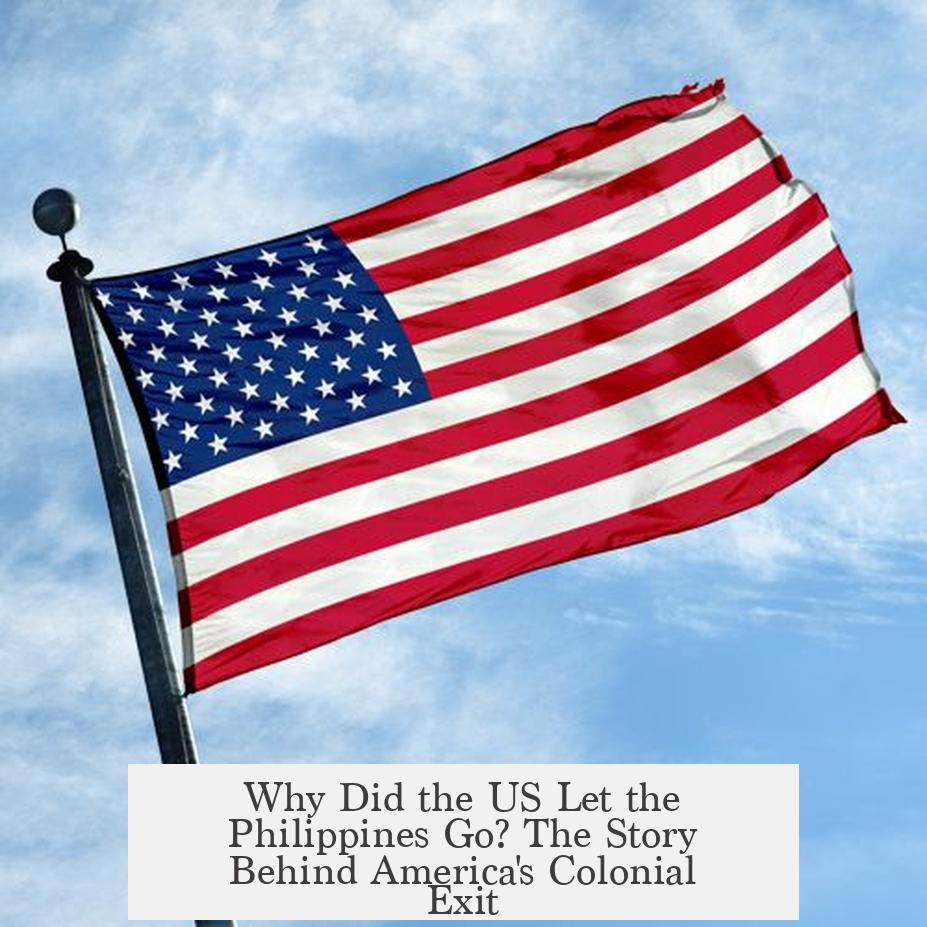
The United States let the Philippines go mainly because maintaining control turned out to be costly, politically complicated, and increasingly unpopular both at home and abroad. The journey from bold imperialist ambitions to eventual independence is full of twists, battles, and changes in American political mood. Let’s unravel this story, piece by piece.
When the Philippines first became an American colony after the Spanish-American War in 1898, the US set out with the grand plan of turning these islands into a major naval base in East Asia. President William McKinley and other imperialists dreamed of America’s new role on the world stage—a global power with overseas possessions.
However, this dream clashed with harsh realities. The islands were no easy prize. Instead of a peaceful takeover, the United States found itself knee-deep in conflict. Emilio Aguinaldo and Filipino revolutionaries did not accept the transfer of authority from Spain to the US. What began as hopes for expansion soon evolved into full-blown war—the Filipino-American War—marked by guerrilla fighting and extensive bloodshed.
This unexpected insurgency was a big red flag for many Americans back home. Newspapers splashed grim stories of brutal conflict. Imperialist enthusiasm waned quickly as the human and financial costs piled up.
The Complexity of a New Colony
It wasn’t just the Filipino insurgents in the north and center that posed a problem. The southern islands of Sulu complicated matters even further. Spain had claimed Sulu as part of its territory but never really controlled it. American forces suddenly confronted Muslim communities unwilling to acknowledge either Spanish or American rule. Bloodshed followed.
Maintaining order in this sprawling, diverse archipelago was no small feat. With around 10 million people living in the Philippines circa 1900, the task was daunting. Puerto Rico, a much smaller territory, was manageable as a dependency. But the scale of the Philippines made indefinite colonial management untenable.
When Strategy Meets Politics
On top of the logistical nightmare, the US faced internal political hurdles. The Philippines’ immense population meant that if it were to become part of the US, it would require full statehood status—or even multiple states. Imagine adding millions of new voters, representatives, and senators suddenly shaking up American politics.
Congress and the Senate, already wary of shifting power balances, balked at this. Politicians feared the sweeping changes this integration would bring, particularly because the Filipino population was diverse culturally, religiously, and linguistically. This made assimilation a complicated topic—one ripe for controversy and debate.
The Shift in American Ideals: From Empire to Self-Determination
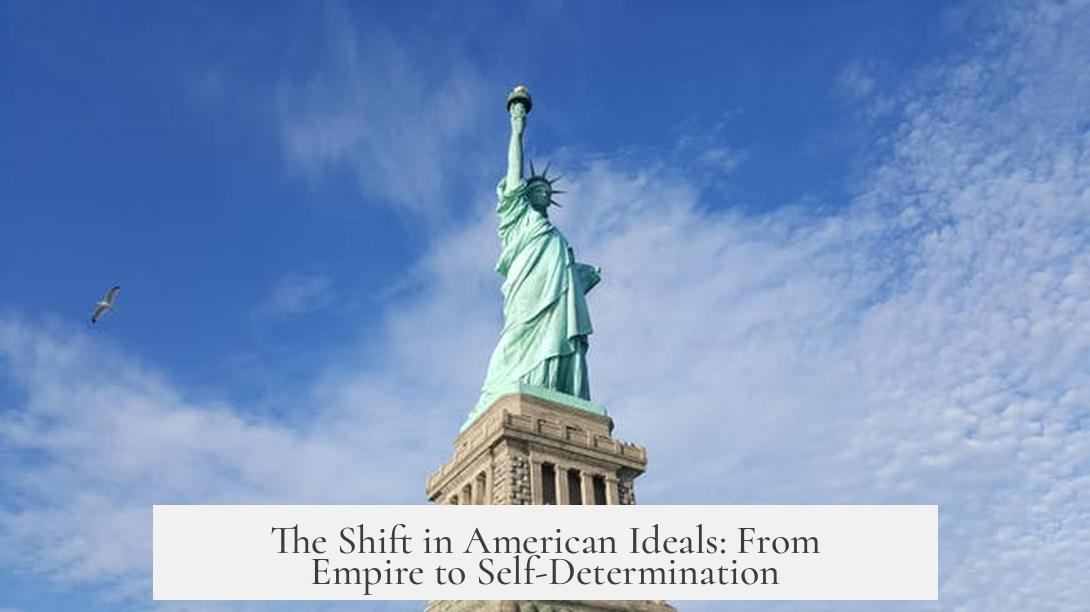
Remember, early 20th century America wasn’t monolithic on imperialism. McKinley, in 1898, was quite the imperialist enthusiast. But a mere fifteen years later, President Woodrow Wilson championed self-determination in Europe and urged that colonies respect the wishes of their native populations.
The winds of change had started to blow. After the bitter wars and ongoing unrest in the Philippines, Washington grew increasingly reluctant to appear overtly imperialistic. Forcing the Filipinos to accept continued American rule would mean constant conflict and growing domestic opposition.
Filipino resistance—which had been fierce from the beginning—was now backed by calls for independence from local leaders, including representatives sent to Washington. By the time of the 1916 Jones Law, the US promised full independence but wobbled on a specific timeline.
The Filipino Voices Shape the Outcome
Unlike some colonial populations elsewhere, Filipino leaders largely supported independence over statehood. This consensus made it easier for the US to lean toward granting independence without risking a drawn-out political battle over statehood in Congress.
Finally, with the Tydings-McDuffie Act of 1934, a clear timetable for independence was set: after a 10-year transition period, the Philippines would stand as a free nation. The US achieved a peaceful exit that avoided continued costly military engagements and complex political wrangling.
What Can We Learn From This?
Why did the US let the Philippines go? The reasons come down to changing political ideals, practical difficulties in managing a large and resistant colony, and the costs—both financial and human—of maintaining an empire overseas.
This episode teaches us that imperial ambitions often clash with political realities. The United States discovered that controlling an overseas colony isn’t just about naval bases or land; it’s about people’s will and the willingness to sustain governance.
It also shows how public opinion and domestic politics can turn the tide on foreign policy. America’s brief imperialist phase gave way to respect for self-rule and independence movements—setting a template that influenced later decolonization worldwide.
Could Current Global Powers Learn From History?
As we consider modern global politics, the US decision on the Philippines reminds us to weigh deeply the costs of controlling foreign lands and peoples against the benefits. It asks this vital question: Is it worth ruling over others against their will, or should nations always strive to support self-determination?
Ultimately, history proves that no empire stands forever. The Philippines’ journey from colony to independence symbolizes how change is inevitable—and how listening to native voices can guide a more peaceful transition.
In short: America let the Philippines go because keeping them was too costly, both in money and reputation, going against increasingly popular ideals of freedom and self-rule. The Filipino people’s strong push for independence sealed the deal.
Why did the US face challenges keeping the Philippines after acquiring it?
The Philippines was already under local control by Aguinaldo’s government, which rejected the transfer from Spain. The US also encountered resistance from Muslim groups in the south, leading to costly conflicts and instability.
How did American politics affect the decision to let the Philippines go?
Initially, imperialists backed retaining the colony. Over time, war costs and public opinion shifted Congress against imperialism. Many politicians opposed Philippine statehood due to how it would alter the balance of power.
Why was Philippine statehood in the US Congress considered a problem?
The Philippines had millions of people, meaning many new congressional seats. This potential shift in power made American politicians reluctant to grant statehood or full integration into the US political system.
What role did Filipino leaders play in the decision for independence?
Filipino commissioners opposed statehood and pushed for independence. Their support helped convince the US government to pass laws granting eventual independence rather than continuing colonial rule.
What legal steps did the US take towards Philippine independence?
The 1916 Jones Law promised independence without a set date. Later, the 1934 Tydings-McDuffie Act established a timetable for full independence, reflecting US commitment to letting the Philippines govern themselves.
